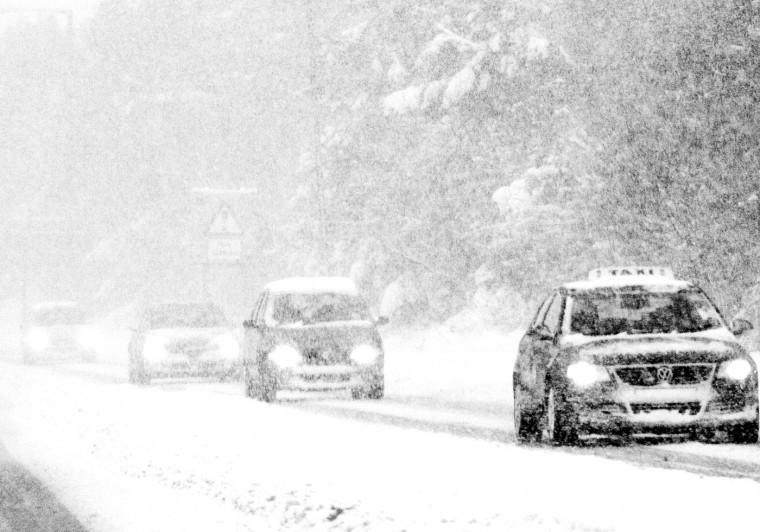Winterizing your car 101
A general view of motorists driving through the heavy snowfall, in Stanley, England, Saturday, Nov. 27, 2010.
November 29, 2010
DeKALB | With the temperatures dropping and the winter season beginning, students should remember to take precautions with their vehicles during this time of year. Local auto shops offer some valuable advice on how to winterize vehicles.
Wiper blades
Driving in a blizzard at 30 mph is not the time to discover that your windshield wiper blades aren’t working. If the wiper blades appear cracked or worn, it’s probably a good idea to get them replaced, said John Volkert, owner of Barb City Automotive, 1150 S. Fourth St. Rear. To work effectively, wiper blades should be replaced once a year. Typically, wiper blades range about $20 to $25 depending on the brand, said Rich King, of Chuck’s Auto Center, 1625 DeKalb Ave., Sycamore. Also, make sure to fill up on windshield washer fluid.
Anti-Freeze
It is recommended that anti-freeze should be changed at least every other year. Anti-freeze test kits are available at Walmart, Target or auto part stores.
“Your anti-freeze is the main thing that protects your car from freezing up in the winter,” King said.
When testing the anti-freeze, the color should come out clean. If it’s dirty, it’s time to replace the anti-freeze.
Tires
The colder the weather gets, the lower tire pressure will drop. For every 10 degree Fahrenheit drop, one pound per square inch (psi) drops as well. It’s critical to maintain proper tire pressure to ensure the best possible traction. To find the recommended tire pressure for your vehicle, check the driver’s side door.
When looking on the actual tire, it tells the maximum amount of tire pressure, not the recommended amount.
“Never put tires at the max amount (psi) because this makes tires hard and hard to steer,” King said.
Also, too much tire pressure can result in a blowout.
Belts and Hoses
During cold weather, belts and hoses experience a lot of wear and tear. If belts look cracked or worn, they should be replaced. If hoses have cracks or bulges, they should also be replaced.
“The automotive industry recommends you change your hoses every four years, unless they have cracks or bulges then you want to change them right away,” Volkert said.
Emergency Car Kit
Taking necessary precautions to winterize your vehicle can help prevent accidents.
This, however, is not guaranteed. Emergencies do occur, so being prepared for the worst is critical, especially during the winter months.
“You always want to make sure you have a blanket,” King said. “It’s very important to stay warm.”
Also, keeping on hand a pair of jumper cables, a fold-up shovel, a flashlight with good batteries and a flare kit will become very useful in emergencies.







